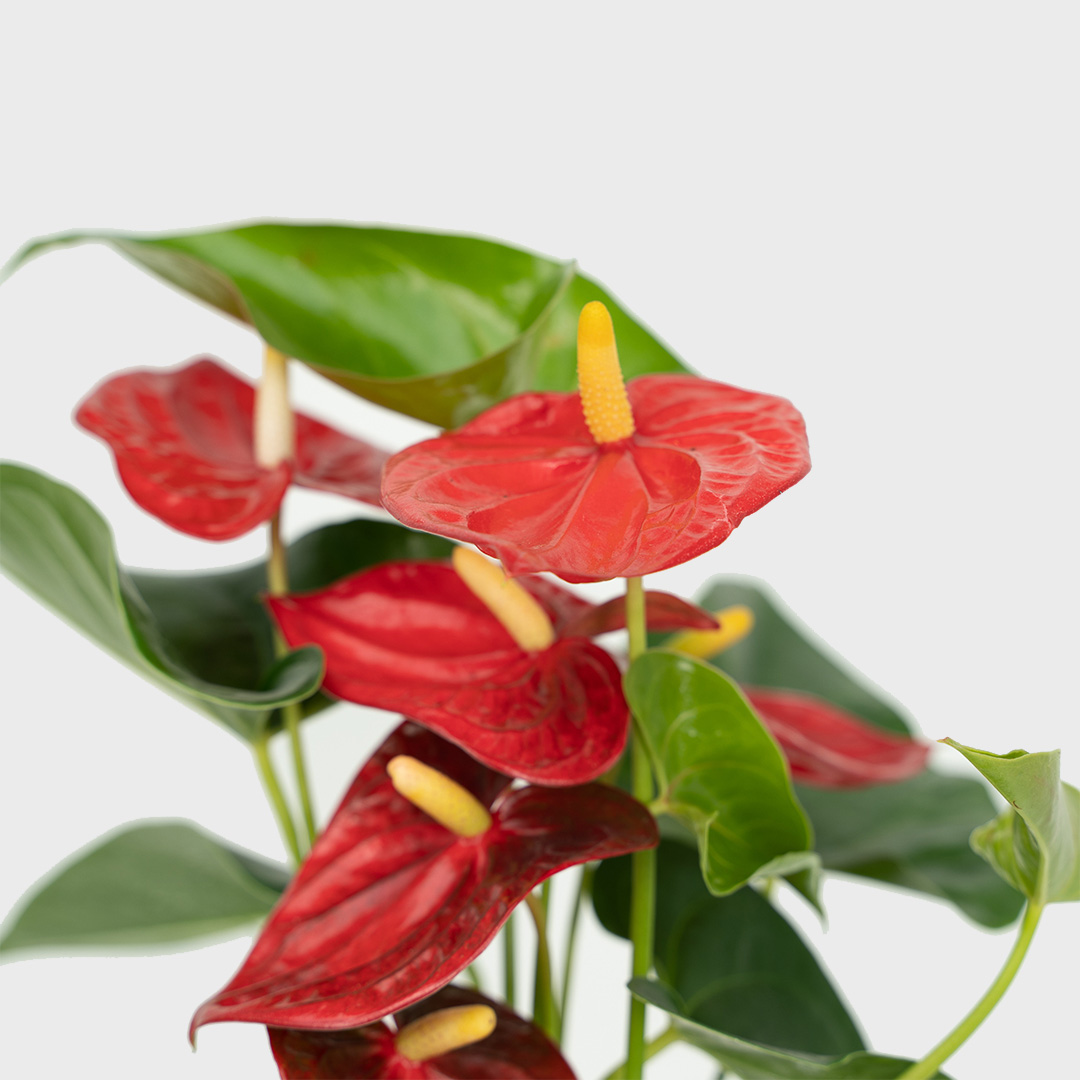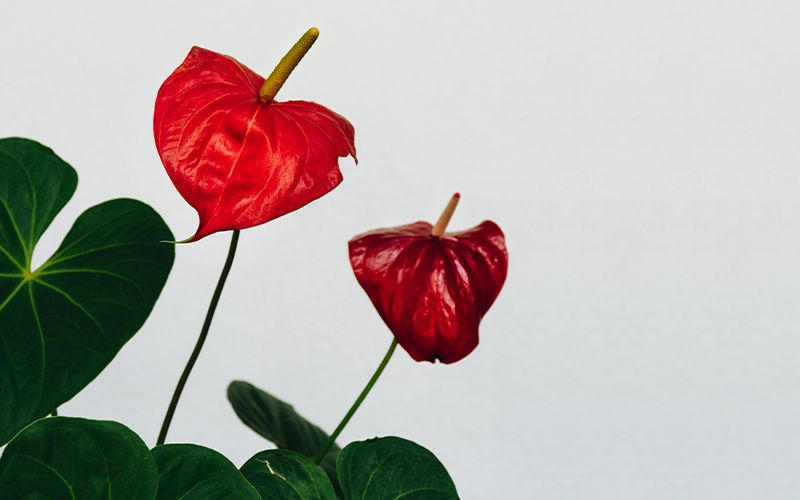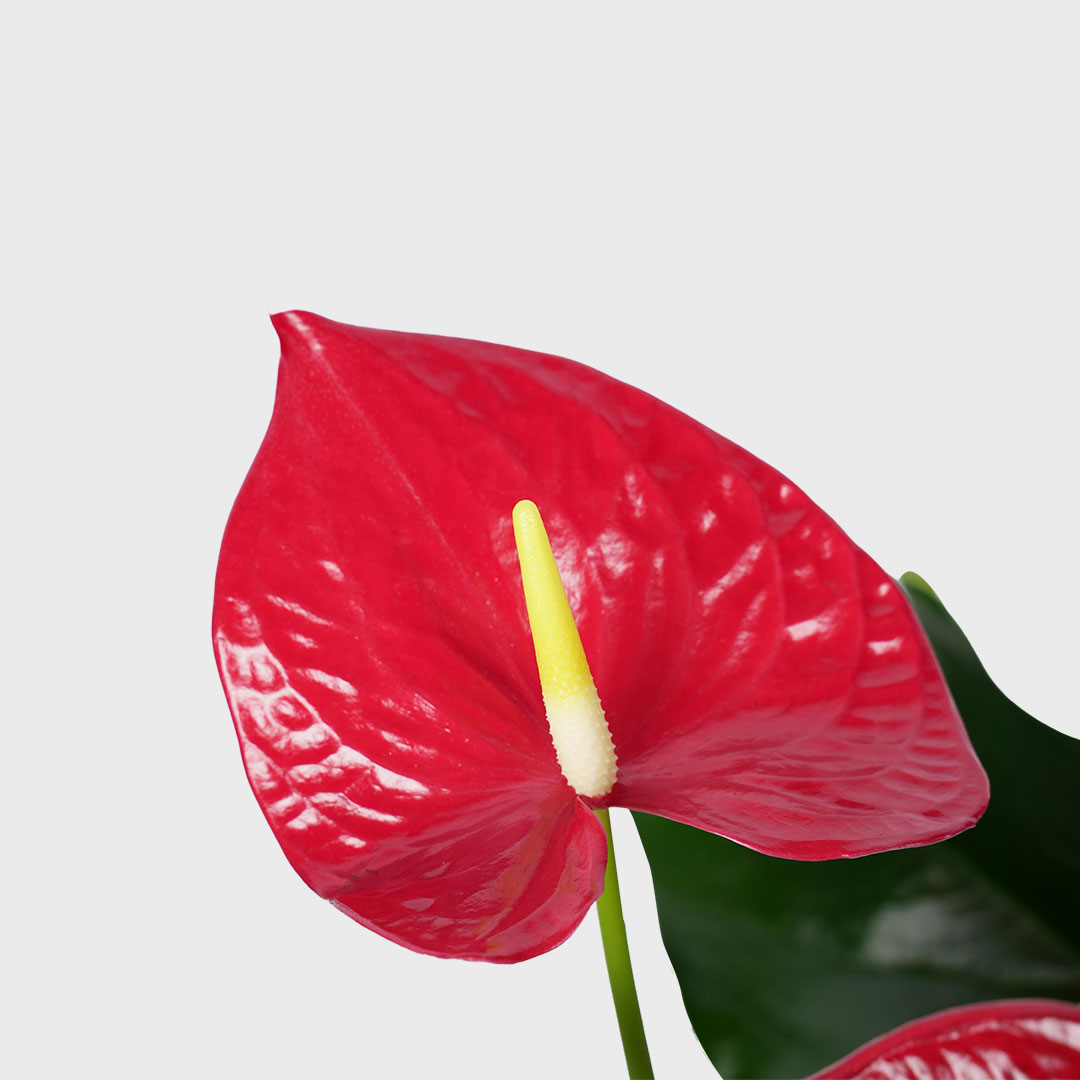
Deliver to
The Netherlands
 English
English

The Anthurium, also known as the Flamingo plant, is one of the most friendly plants you can get your hands on. The Flamingo plant grows best with sufficient light, warmth, and humidity that may be on the higher side. In the jungle the Anthurium receives a lot of indirect sunlight. Best imitating the jungle life, and position the Anthurium on a spot with a lot of indirect sunlight. Water the plant once a week, and you can have a healthy, long-lasting relationship with the plant!
Medium light
Water once a week
Toxic
Air-purifying
Bright, indirect light is perfect for the Anthurium. The more sunlight it receives, the more blooms it will produce, but never expose it to direct sun as it can burn its foliage. The Anthurium prefers a spot next to a window on the west or east. If an Anthurium gets too much sunlight, the plant will get yellow leaves. If the Anthurium gets too little light, the plant will stop growing flowers.
A consistent watering schedule will help your Anthurium bloom. Allow the top (2 to 6 cm) of the soil dry out, before watering again. Make sure that when water the water runs out of the drainage holes. Avoid overwatering the plant as it can lead to root rot, but don't let it get too dry either; therefore, check the soil every few days.
In the growing seasons from March to September, water the Anthurium once or twice a week. Make sure the soil is dry between each watering.
In the winter, you can water it once every two weeks, again confirming that the soil is dry before each watering.
To encourage more blooms, you can use a plant nutrition. Feeding the Anthurium once a month during the summer and spring with a balanced fertilizer is enough. It is best to use a fertilizer to half the recommended strength. In winter, indoor plants appreciate being left alone to rest.
We recommend repotting the Anthurium once every 2 years, and when the pot becomes too small of course. Repotting the Anthurium gives the plant new nutrients and more room for root growth. The new airier soil is also very good for watering. The best period to repot is spring.
The most ideal temperature for an Anthurium plant is typically between 21 to 29 degrees Celsius. It prefers warm and humid conditions, but can tolerate slightly cooler temperatures.
Pruning helps an Anthurium to remove any yellowed or damaged leaves, promotes growth, and maintains a more compact appearance. It can also be done to control the size of the plant and prevent it from becoming too leggy. Clean and sharp pruning tools should be used to make clean cuts and avoid damaging the plant.
The Anthurium is not susceptible to pests and diseases. Mourning flies and root rot can always appear, although this is mostly due to unproper care.


Anthuriums can flower all year round. In general, the Anthurium blooms for 3 months, and then stops flowering for a few months.
Tips to make the Anthurium bloom again:
If the Anthurium gets yellow leaf edges and leaf tips, this is because of the watering. The yellow leaf tips can be caused by too little or too much water.
If the Anthurium leaves get a completely yellow glow, this is caused by sunburn. In this case, move the plant to a location with less sunlight.
Yes, you can let the Anthurium grow in water. Before you let the Anthurium grow in water it is important to clean the roots. As soon as the Anthurium grows in water it is important to change the water and glassware once a week. This is also called: Hydroponics.
Yes, you certainly can. Check out our tips on how to propagate the Anthurium.